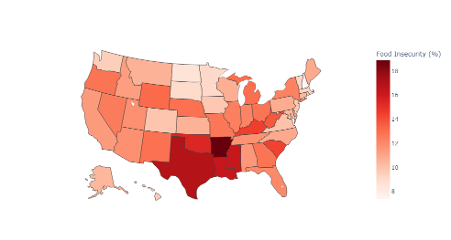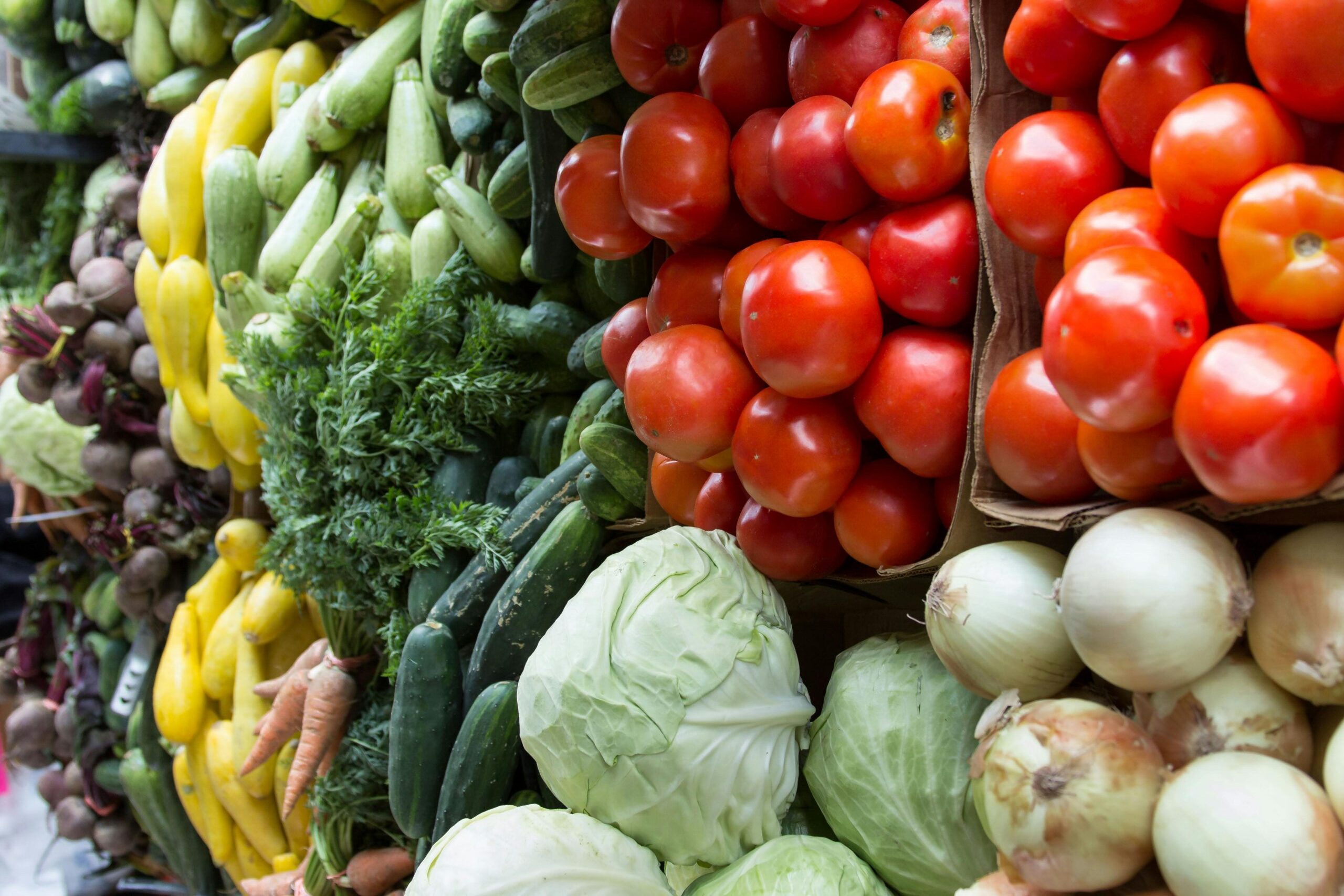The Food and Agriculture Organization (FAO) of the United Nations defines a person as food insecure if s/he “lacks regular access to enough safe and nutritious food for normal growth and development and an active and healthy life.” According to the U.S. Department of Agriculture’s (USDA) 2023 report on Household Food Security in the United States, 13.5% of households—approximately one in seven—experienced food insecurity (Rabbitt et al. 2023), underscoring the continued prevalence of this issue nationwide. Food insecurity exhibited an upward trend from 12.8% in 2022, reflecting a growing number of households with limited resources and chronic health conditions, among other factors.
The Southern region faced higher food insecurity rates (14%) compared to the national average of 12.2% between 2021 and 2023 (see Figure 1). Only five of the thirteen Southern states fell below the national average: Florida (12.0%), Tennessee (11.7%), Alabama (11.5%), North Carolina (10.9%), and Virginia (10%). Arkansas ranked as the most food-insecure state in both the Southern region and the nation, with a rate of 18.9%. The state’s food insecurity rate has steadily increased since 2020, reflecting significant challenges many Arkansan households face in accessing adequate food. According to Feeding America, more than 560,000 Arkansans experienced food insecurity in 2022, with approximately 24% of those affected being children. Other Southern states with food insecurity rates above the national average include Texas (16.9%), Mississippi (16.2%), Louisiana (16.2%), Oklahoma (15.4%), Kentucky (14.5%), South Carolina (14.4%), and Georgia (12.8%).
It is important to address a lack of sufficient access to food due to its negative impact on health, which leads to poor productivity and lower overall economic growth and development. This is especially important given the increasing risk of food insecurity from greater uncertainty in global developments, such as wars in various parts of the world. These conflicts have disrupted food supplies in the US and worldwide (Filho et al. 2023; Kemmerling et al. 2022). Furthermore, higher domestic food prices and reduction in overall economic activity make it more difficult for low-income households to achieve food security (Elmes 2016).
To address this issue, the federal Supplemental Nutrition Assistance Program (SNAP) provides temporary assistance to help households purchase food until they regain financial stability. Non-profit organizations, such as food banks and food pantries, also play an important role in local communities. Sustainable efforts to reduce food insecurity must be intensified. Prospects for improving long-term food security are tied to the same economic factors that influence household income and budgeting, especially those connected to labor productivity and wages (LeBlanc et al. 2005). Efforts of this nature generally require the collaboration of community stakeholders to ensure a resilient economy, so that the benefits reach all community members.
Figure 1. Prevalence of Household Food Insecurity by State, average 2021-2023

References
Elmes, M. B. 2018. Economic Inequality, Food Insecurity, and the Erosion of Equality of Capabilities in the United States. Business & Society 57(6): 1045-1074. https://doi.org/10.1177/0007650316676238
Filho L. W., M. Fedoruk, JH Paulino Pires Eustachio, J. Barbir, T. Lisovska, A. Lingos, and C. Baars. 2023. How the War in Ukraine Affects Food Security. Foods. 12(21): 3996.
Kemmerling, B., C. Schetter, and L. Wirkus. 2022. The logics of war and food (in)security. Global Food Security 33. https://doi.org/10.1016/j.gfs.2022.100634.
LeBlanc, M., B. Kuhn, and J. Blaylock. 2005. Poverty amidst plenty: food insecurity in the United States. Agricultural Economics 32(s1): 159-173.
Rabbitt, M. P., Reed-Jones, M., Hales, L. J., & Burke, M. P. (2024). Household food security in the United States in 2023 (Report No. ERR-337). U.S. Department of Agriculture, Economic Research Service.
Feeding America, Food Insecurity among the Overall Population in Arkansas, Retrieved September 27, 2024, from https://map.feedingamerica.org/county/2022/overall/arkansas
Thomas, Chrystol, and An-Ting Liao. “The Food Insecurity Challenge: A Snapshot of the Southern U.S.” Southern Ag Today 4(40.5). October 4, 2024. Permalink

Leave a Reply